
If the call of the wild is what attracts you to cats, the Savannah is one to consider. Created by crossing African Servals with domestic cats and then breeding the offspring to cats such as Egyptian Maus, Oriental Shorthairs, Savannahs, Ocicats and others, this cat stands out for his large pointed ears and spotted golden, silver or black smoke coat. The Savannah is a relatively new breed that was recognized by The International Cat Association (TICA) in 2012.
The History of the Savannah
A kitten sired by a serval (a small African wild cat) on a female domestic cat in 1986 was the beginning of the Savannah as a breed. This first-generation cross was named Savannah, and when breeder Patrick Kelly heard about her, he decided to create a new breed. Kelly and fellow breeder Joyce Sroufe began a breeding program and wrote a standard for the new cats.
Appearance
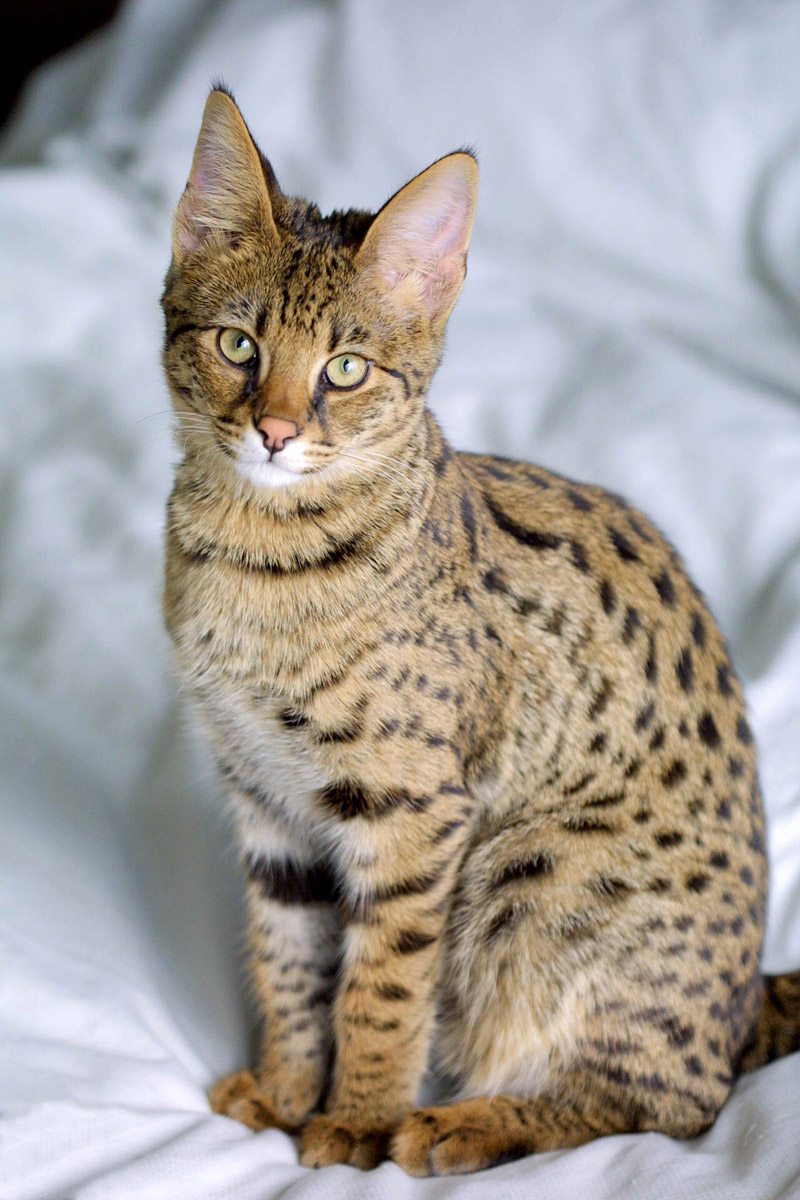
When people look at a Savannah Cat, they typically think it is a much larger cat than it actually is due to the length and height of the cat. Size depends heavily on the generation and sex of the cat, with the F1 males just about always being the biggest. The closer the generation is the Serval ancestor, the larger the cat tends to be. Males tend to be significantly larger than females. In general these pets will range from about 8 to 30 pounds in weight.
They are tall and lanky with spots covering their main coat (gold all the way to silver). The long legs and large paws seem to make them look much heavier than they really are.
The coat/pattern of the Savannah is often decided by the domestic cat that is used in the breeding process. F1s and F2s will have the most vivid coloring and spotted coats. Savannah Cats are available in many different colors and patterns. The most common and widely coveted color and pattern is the traditional gold coat with the brown spots as it looks the most “wild.” That being said, there are several other TICA approved colors such as the silver, smoke and black varieties.
There are other colors available, as well, but they are not able to be shown in competitions. As with any rare variety of any kind, there is always someone who wants it — this is even true with the rare colored kitties.
F1, F2, F3, F4 & F5
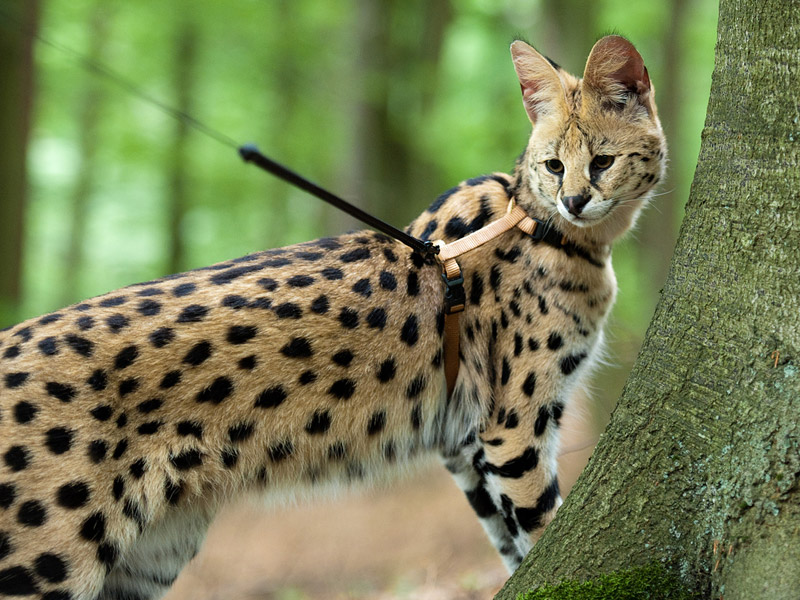
There are several classifications for these kittens. They are based upon how much wild serval is bred into the savannah cat. These descendants of the serval will range from 5% to 65% wild serval.
F1 savannah cats have the largest percentage of wild African Serval in them, and are usually the most expensive type of savannah cat.

F1 Savannah Cats
F1 males tend to be about 17 – 25 lbs and about 15 to 19 inches tall (to the shoulder). Lengthwise, F1 Savannahs are usually in the range of 20-25 inches. F1 Savannahs are definitely the most extreme of any of the levels due to the amount of wild Serval bred into them. That being said, they are really manageable compared to wild cats or other types of hybrids.
Personality of an F1 Savannah
These cats only form a connection with 1-2 people in most cases. They are not aggressive with others, but they will avoid interactions with them! If you have strangers in your house, you probably will not even know that the cat exists — and if they are out of hiding, they will most likely be perched up high, away from the action. This goes for children too — F1 Savannahs tend to avoid the kids. They are not much of a lap cat, as they would rather be playing around due to their high energy level. The only time that you may have trouble with them not using their litter box is if they are unhappy or trying to tell you something!
F2 Savannah Cats

F2 males tend to be approximately 15 to 24 lbs, though some can climb over the 30 pound mark. When it comes to height they are just about the same as an F1 — maybe an inch or so shorter. Female F2 Savannah Cats are usually in the 12 to 16 pound range.
Personality of an F2
F2 Savannah Cats are a much safer bet to be more of the social type than an F1. Still, about 1 out of 5 F2 kittens will act like an F1 and avoid socializing with anyone other than their main companion. Like F1 cats, they are not meant to be lap cats. However, this variety will play with children and enjoys being petted. No consistent issues with using the litter box!
F3 Savannah Cats
F3 males weigh in around 13-19 lbs and can be up to 17 inches in height. They usually about 17 to 20 inches in length. F3 Savannahs of the other gender tend to be significantly lighter in weight, coming in around 10 to 13 lbs.
Personality of an F3
This is the first generation of Savannah Cat that you can expect to enjoy being a bit of a lap cat. We highly recommend the F3 variation of the Savannah because if you choose wisely, you can find one that has the look of F1s or F2s, but with a more family-friendly, loving personality. These cats are ideal if you have smaller children.
F4 and F5s
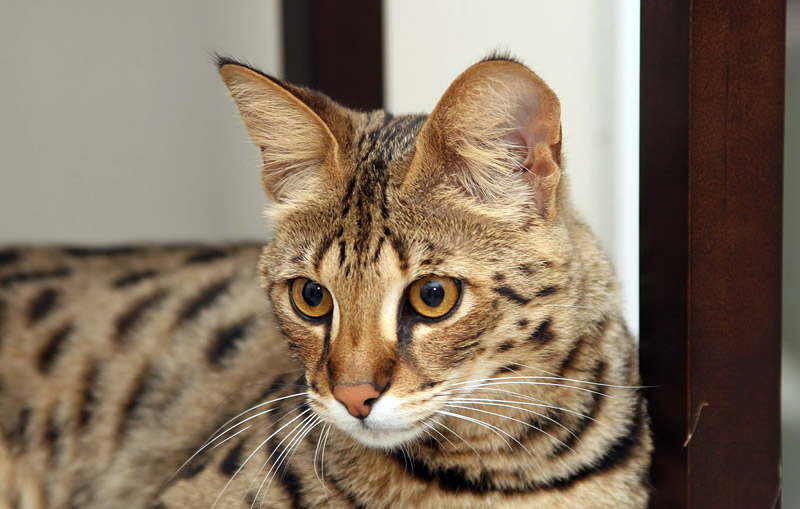
In terms of weight, they are identical to F3 Savannahs at around 13-19 pounds. The most noticeable differences in these variations are in height, shape and length. These cats still get the spots or patterns of the Serval, but they are shaped much more like traditional domestic cats. Speaking on their personality, they are even more outgoing than the F3 and will enjoy playing with and being petted by just about anyone!
Savannah Temperament and Personality
The Savannah is a lovely cat who’s full of personality, but he’s definitely not the cat for everyone, or for first-time cat owners. A Savannah is highly intelligent, curious and active, qualities that require a lot of patience to live with. He demands a lot of interaction and will find ways to make you give it to him if you aren’t on the ball enough to provide it without asking. For instance, he might learn to set off the alarm on your clock-radio to make you come running to turn it off.
This is a cat with a sense of humor and likes a good joke, especially if it’s at your expense. He likes to climb up high—higher than you might have thought a cat could go—then push things down onto you. He likes to hide, assuming that you can’t see him, and then tag you when you’re not looking. Or he might drop his favorite toy into whatever you’re drinking, to make a splash and cause you to have to fish it out.
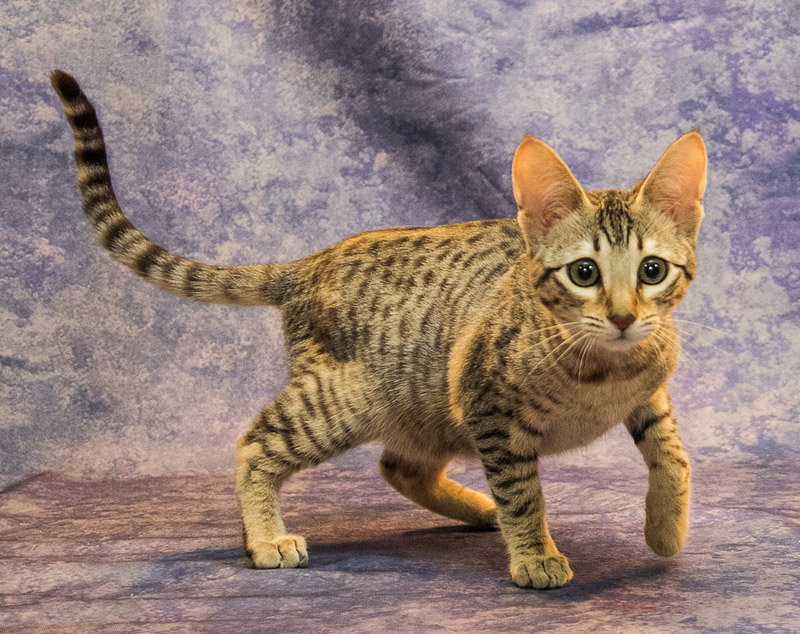
At bedtime, the Savannah will of course share your bed, snuggling in under the covers if he’s cold. Others might perch at the top of your head, spoon against your back, or bring favorite toys to bed with them.
This is a cat who needs a lot of vertical territory. Savannahs love to climb, the higher the better. Provide them with tall cat trees and window perches.
Besides being athletic, Savannahs are also highly intelligent and enjoy the attention that comes with being clicker-trained. Challenge their brain and keep them interested in life by teaching them tricks and games and providing them with interactive toys or puzzle toys that will reward them with kibble or treats when they learn how to manipulate them.
Always choose a kitten from a breeder who raises litters in the home and handles them from an early age. Meet at least one and ideally both of the parents to ensure that they have nice temperaments.
Savannah Health

All cats have the potential to develop genetic health problems, just as all people have the potential to inherit a particular disease. Run, don’t walk, from any breeder who does not offer a health guarantee on kittens or who tells you that her kittens are isolated from the main part of the household for health reasons. Savannahs are generally healthy, but it is always wise to purchase your kitten or cat from a breeder who provides a written health guarantee.
Remember that after you’ve taken a new kitten into your home, you have the power to protect him from one of the most common health problems: obesity. Keeping a Savannah at an appropriate weight is one of the easiest ways to protect his overall health. Make the most of your preventive abilities to help ensure a healthier cat for life.
Savannah Grooming
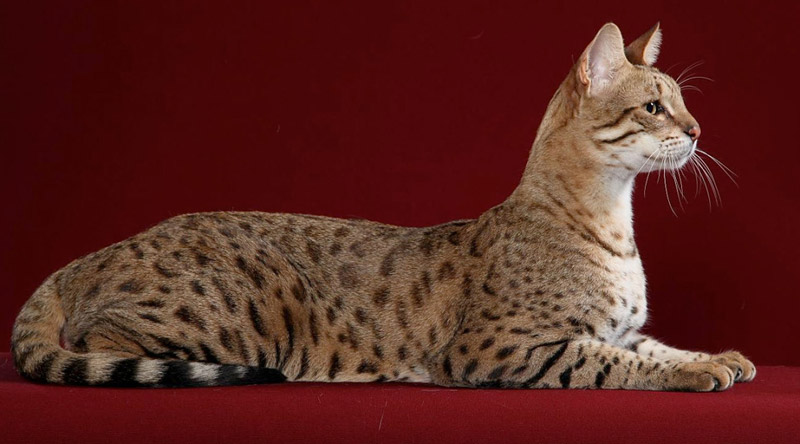
Savannahs have a short, luxurious, soft coat that is easy to care for with weekly brushing. He will love the attention, and if you brush him more often you will find fewer dust bunnies and hairballs around the house.
The rest is basic care. Trim the nails as needed, usually weekly. Check the ears every week for redness or a bad smell that could indicate an infection. If the ears look dirty, wipe them out with a cotton ball dampened with a gentle ear cleanser recommended by your veterinarian. Brush the teeth frequently at home with a vet-approved pet toothpaste for good overall health and fresh breath, and schedule veterinary dental cleanings as needed. Start brushing, nail trimming and teeth brushing early so your kitten becomes accepting of this activity.



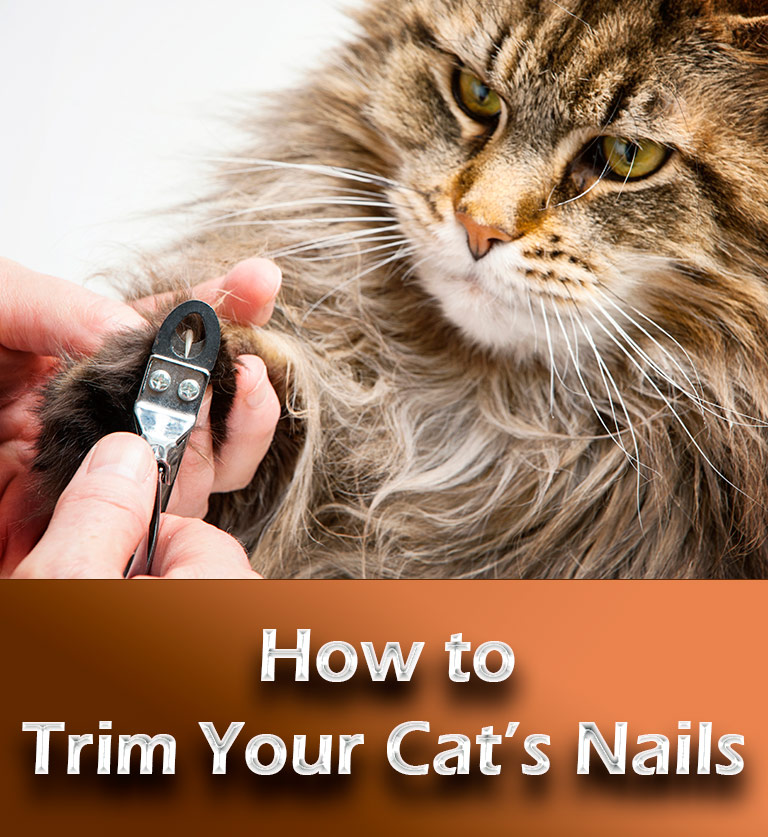

Leave a Reply